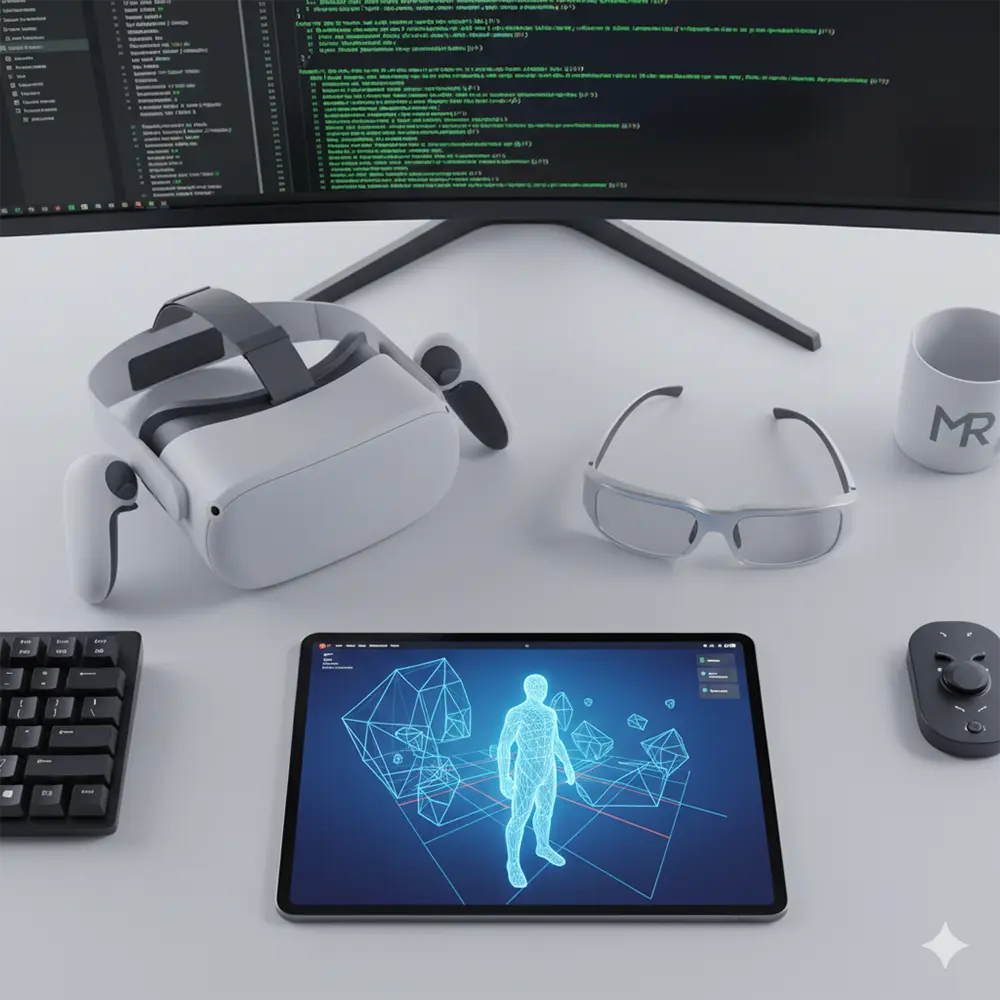
The field of immersive technology—encompassing Augmented Reality (AR), Virtual Reality (VR), and the broader term Extended Reality (XR)—is one of the most dynamic sectors in technology. Keeping pace requires a commitment to continuous learning. This guide, updated from its original 2020 version, serves as a curated, unbiased list of essential resources for professionals, developers, and enthusiasts in 2025.
The Landscape in 2025: What's Changed Since 2020
The last five years have seen a dramatic shift in the immersive landscape. What was once a field of disparate technologies is now converging.
- The Rise of Standalone & Spatial Computing:
The market has decisively moved away from smartphone-based VR (like the discontinued Samsung Gear VR and Google Daydream) and tethered PC-VR towards powerful standalone headsets. The Meta Quest line has become a dominant consumer platform, while the introduction of Apple's Vision Pro has pushed the conversation towards "Spatial Computing."
- From Niche to Mainstream:
AR is no longer just a novelty on smartphones. It's becoming an integrated feature in e-commerce, navigation, and social media. The term "XR" is now commonly used to describe the entire spectrum of immersive technologies.
- Legacy Platforms:
Several platforms mentioned in our 2020 guide, such as Google's Daydream and Lenovo's Mirage Solo, have been sunset as the industry consolidated around more capable hardware.
Platform & Hardware Ecosystems
These companies define the hardware and software ecosystems where XR experiences are built and distributed.
- Apple visionOS
The developer hub for Apple's spatial computing platform. Resources for building apps for Vision Pro, using tools like Reality Composer Pro and ARKit.
- Meta Quest (formerly Oculus)
The central portal for developers building for the Quest line of standalone VR headsets. Includes SDKs, documentation, and best practices.
- Google AR
The home for Google's Augmented Reality efforts, primarily focused on ARCore for Android and Geospatial Creator for location-based experiences.
- Microsoft Mixed Reality (HoloLens)
A leader in the enterprise AR space, this hub provides resources for developing applications for HoloLens 2 and the Windows Mixed Reality platform.
- HTC Vive
A key player in the high-fidelity PC-VR space, offering a range of headsets and development resources for enterprise and enthusiast users.
- Sony PlayStation VR2
The primary resource for information on Sony's console-based VR gaming platform, a significant part of the consumer VR market.
Development Engines & Frameworks
These are the foundational software tools used to build the vast majority of interactive 3D and XR experiences.
- Unity
One of the two dominant real-time 3D development platforms, widely used for creating cross-platform XR applications and games.
- Unreal Engine
The other major real-time 3D engine, known for its high-fidelity graphics and powerful tools for creating photorealistic XR experiences.
- Meta Spark AR
A platform focused on creating AR effects and filters for Instagram and Facebook, offering an accessible entry point into AR creation.
- WebXR Device API
The open standard that enables XR experiences to run directly in a web browser without requiring a separate app installation. Essential for accessible, cross-platform content.
Industry News, Analysis & Standards
- UploadVR
A dedicated news and analysis publication focused exclusively on the VR/AR industry, providing daily coverage of hardware, software, and market trends.
- Road to VR
Another leading independent publication offering in-depth analysis, reviews, and news from across the XR industry since its early days.
- The Khronos Group (OpenXR)
The standards body behind OpenXR, a royalty-free open standard that provides high-performance access to XR platforms and devices.